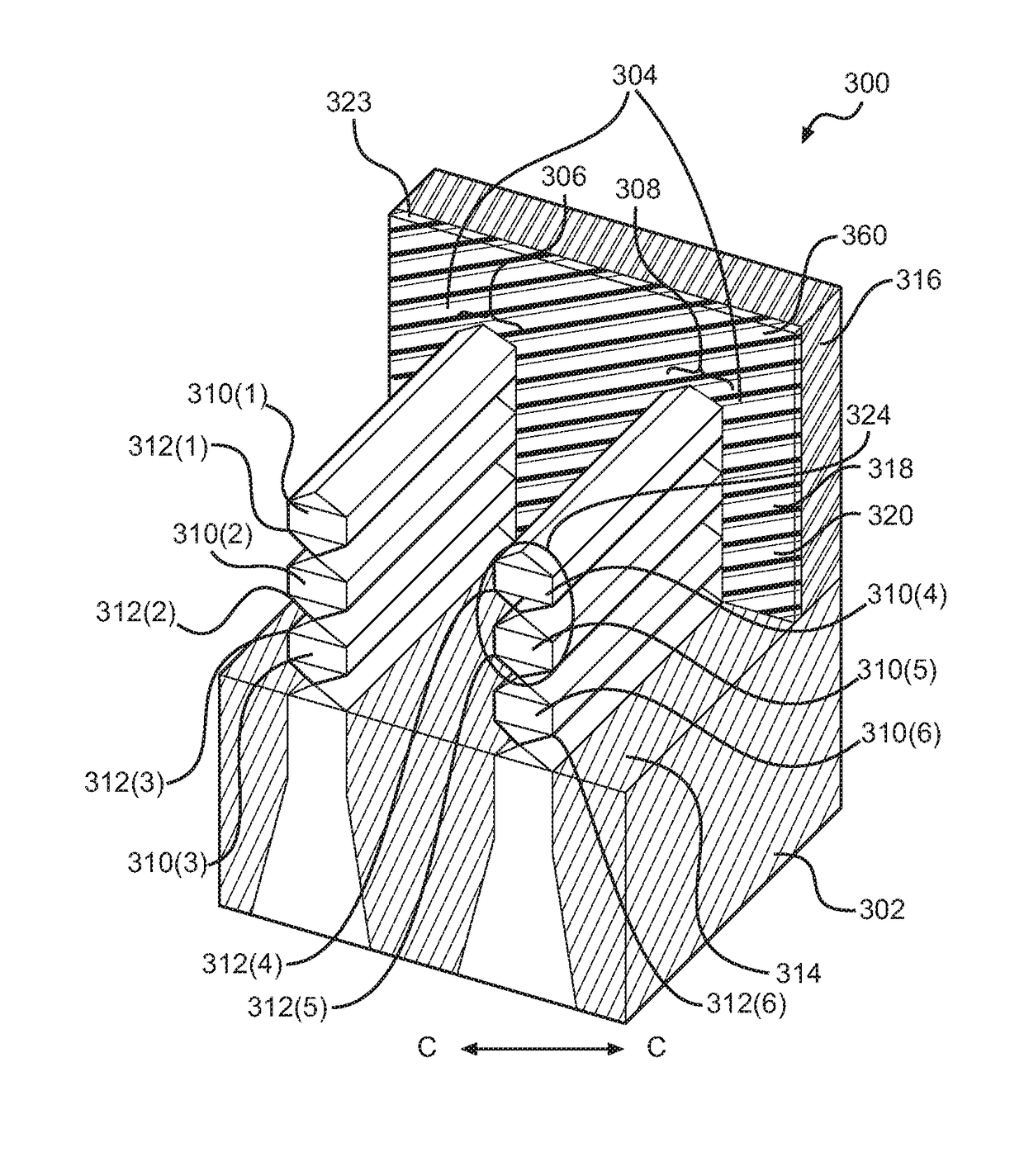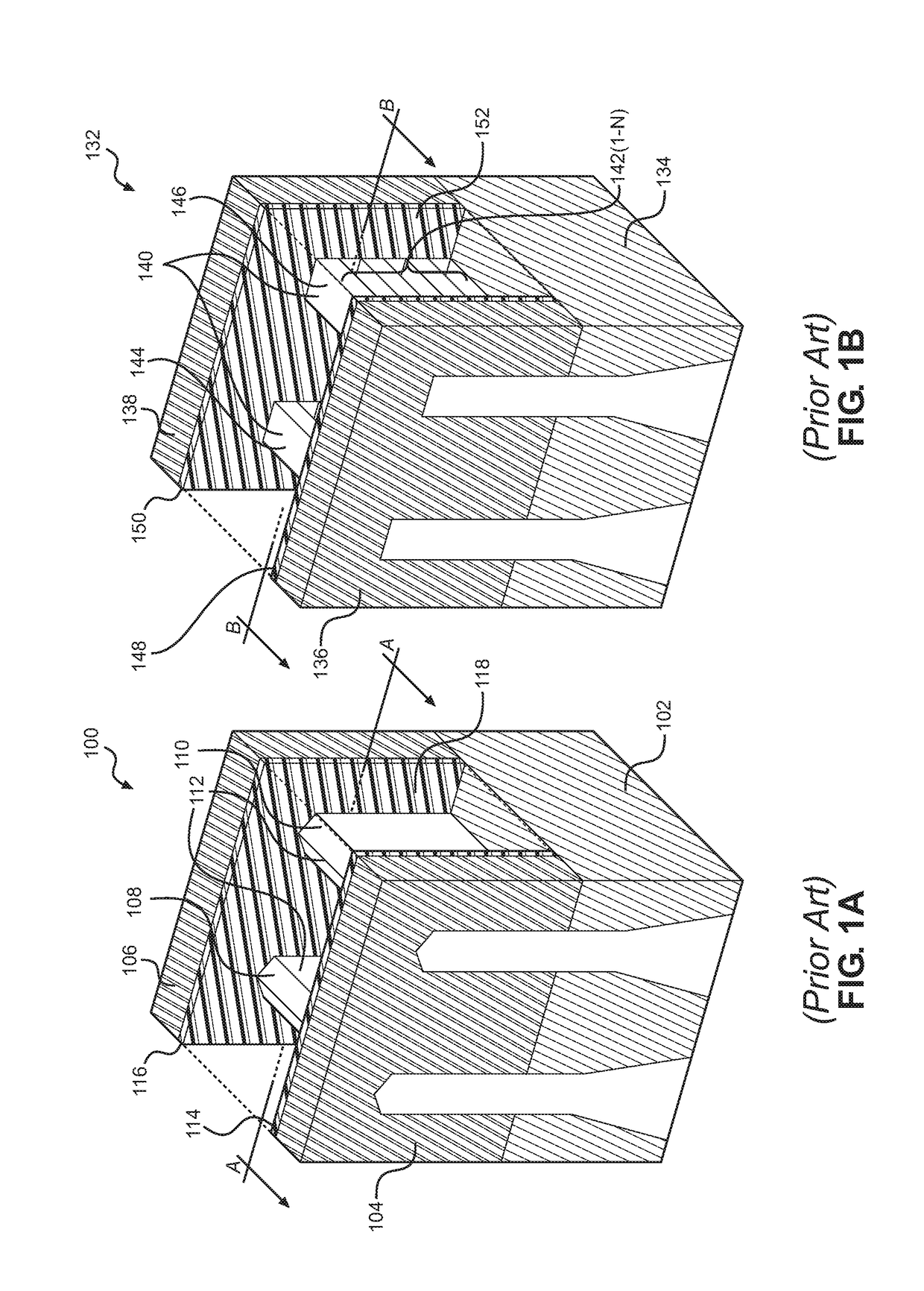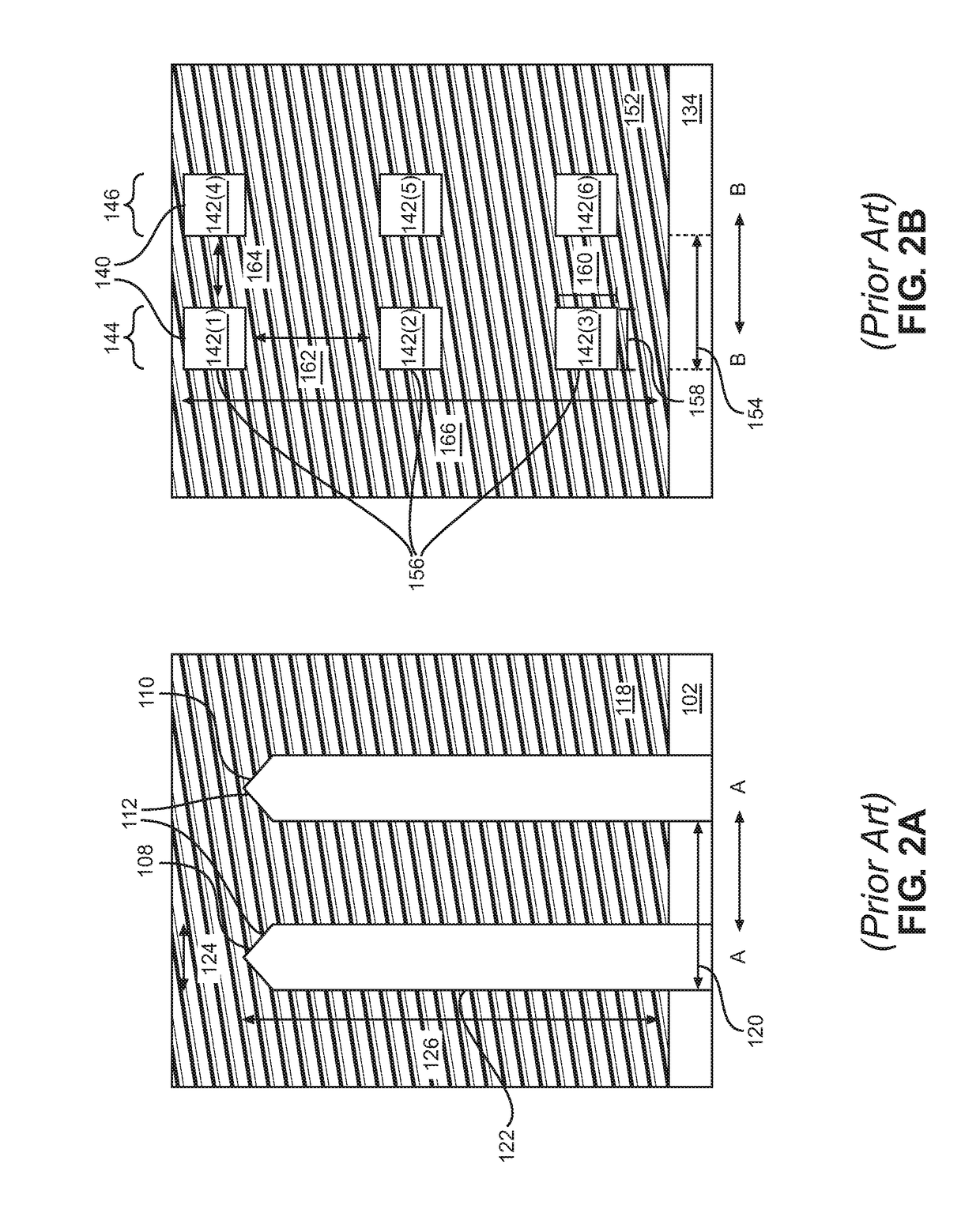Nanowire channel structures of continuously stacked nanowires for complementary metal oxide semiconductor (CMOS) devices
- Summary
- Abstract
- Description
- Claims
- Application Information
AI Technical Summary
Benefits of technology
Problems solved by technology
Method used
Image
Examples
example environment
[0079]FIG. 18 illustrates an example environment 1800 that includes a computing device 1802 and wireless network (not shown) in which the exemplary nanowire device 300 illustrated in FIGS. 3A and 3B may be employed. In this example, the computing device 1802 is implemented as a smart-phone. Although not shown, the computing device 1802 may be implemented as any suitable computing or electronic device, such as a modem, cellular base station, broadband router, access point, cellular phone, gaming device, navigation device, media device, laptop computer, cellular test equipment, desktop computer, server, network-attached storage (NAS) device, smart appliance, vehicle-based communication system, and the like. The computing device 1802 communicates data via cell towers 1804(1)-1804(N), which may be configured to provide a wireless network. Although shown as three (3) cell towers, cell towers 1804(1)-1804(N) may represent any suitable number of cell towers 1804, where n equals any suitabl...
PUM
 Login to View More
Login to View More Abstract
Description
Claims
Application Information
 Login to View More
Login to View More - R&D
- Intellectual Property
- Life Sciences
- Materials
- Tech Scout
- Unparalleled Data Quality
- Higher Quality Content
- 60% Fewer Hallucinations
Browse by: Latest US Patents, China's latest patents, Technical Efficacy Thesaurus, Application Domain, Technology Topic, Popular Technical Reports.
© 2025 PatSnap. All rights reserved.Legal|Privacy policy|Modern Slavery Act Transparency Statement|Sitemap|About US| Contact US: help@patsnap.com



